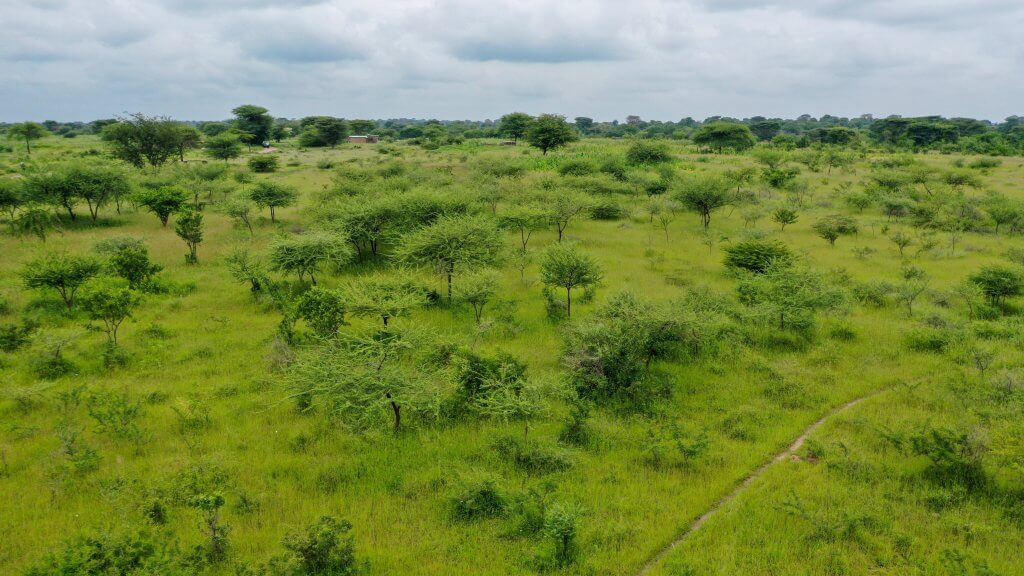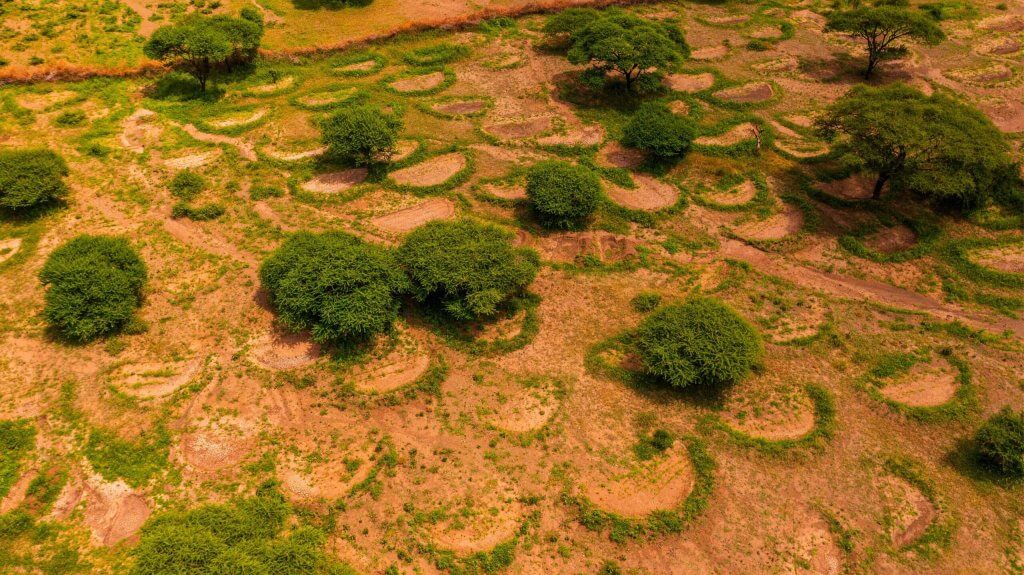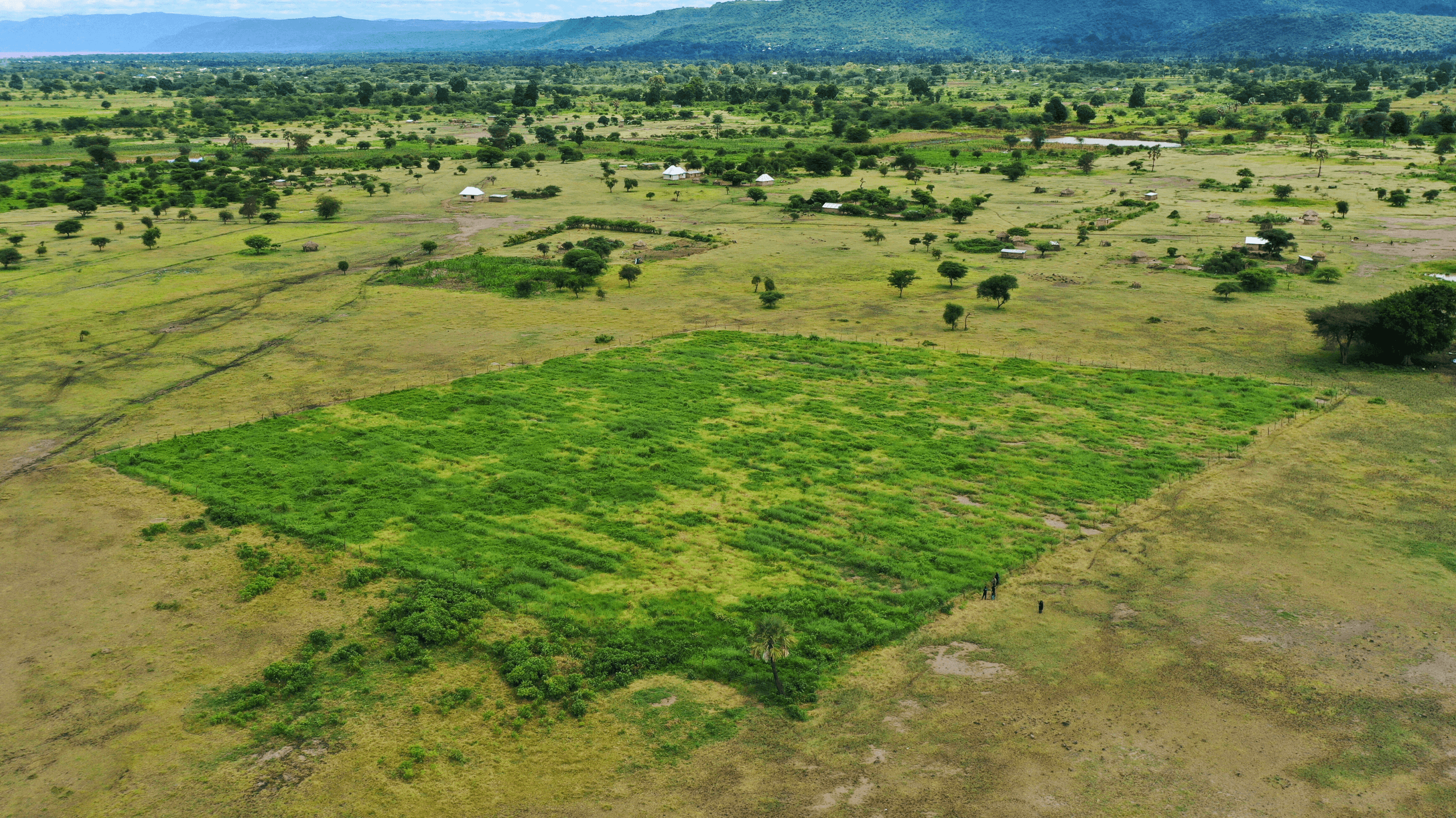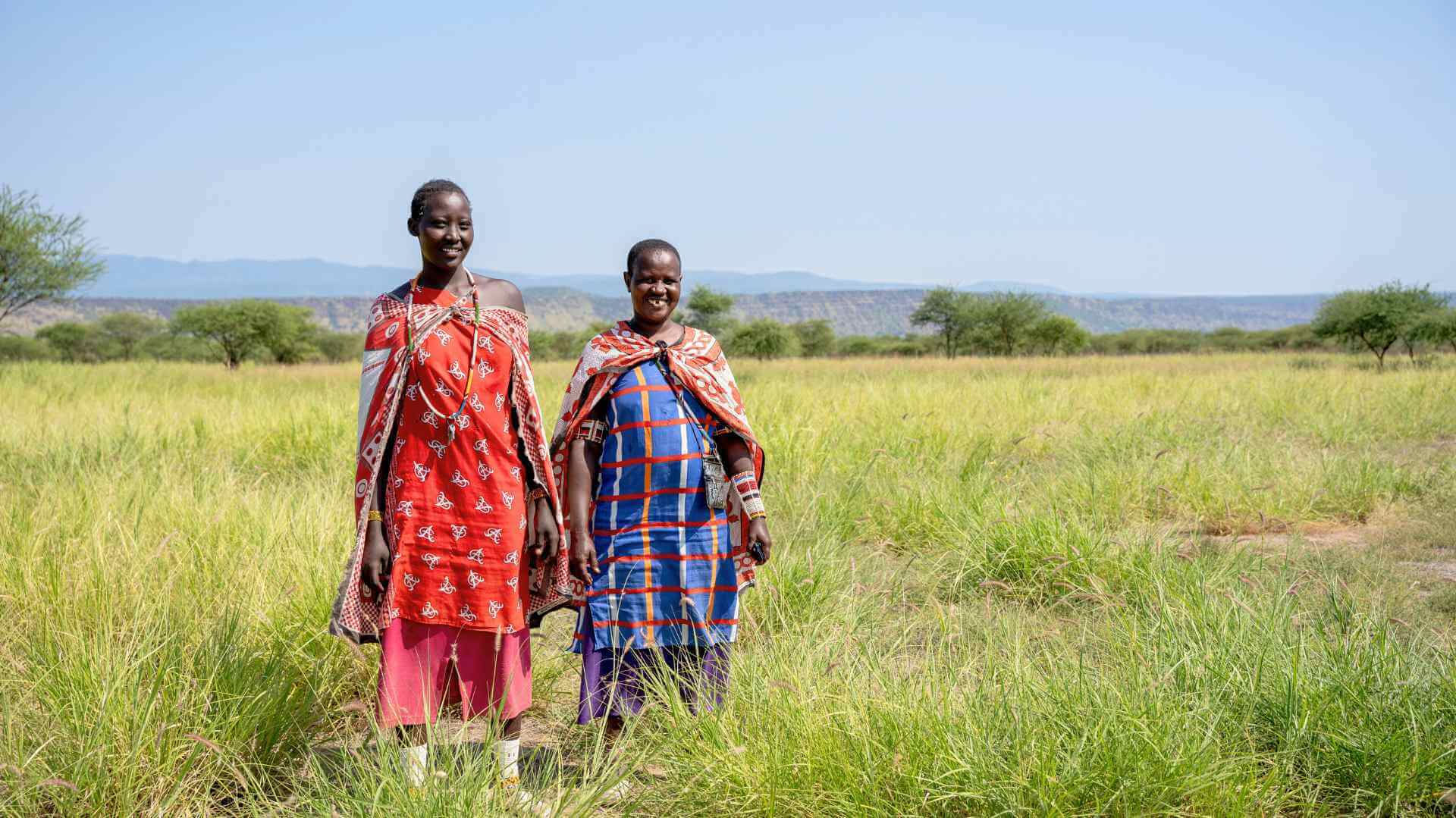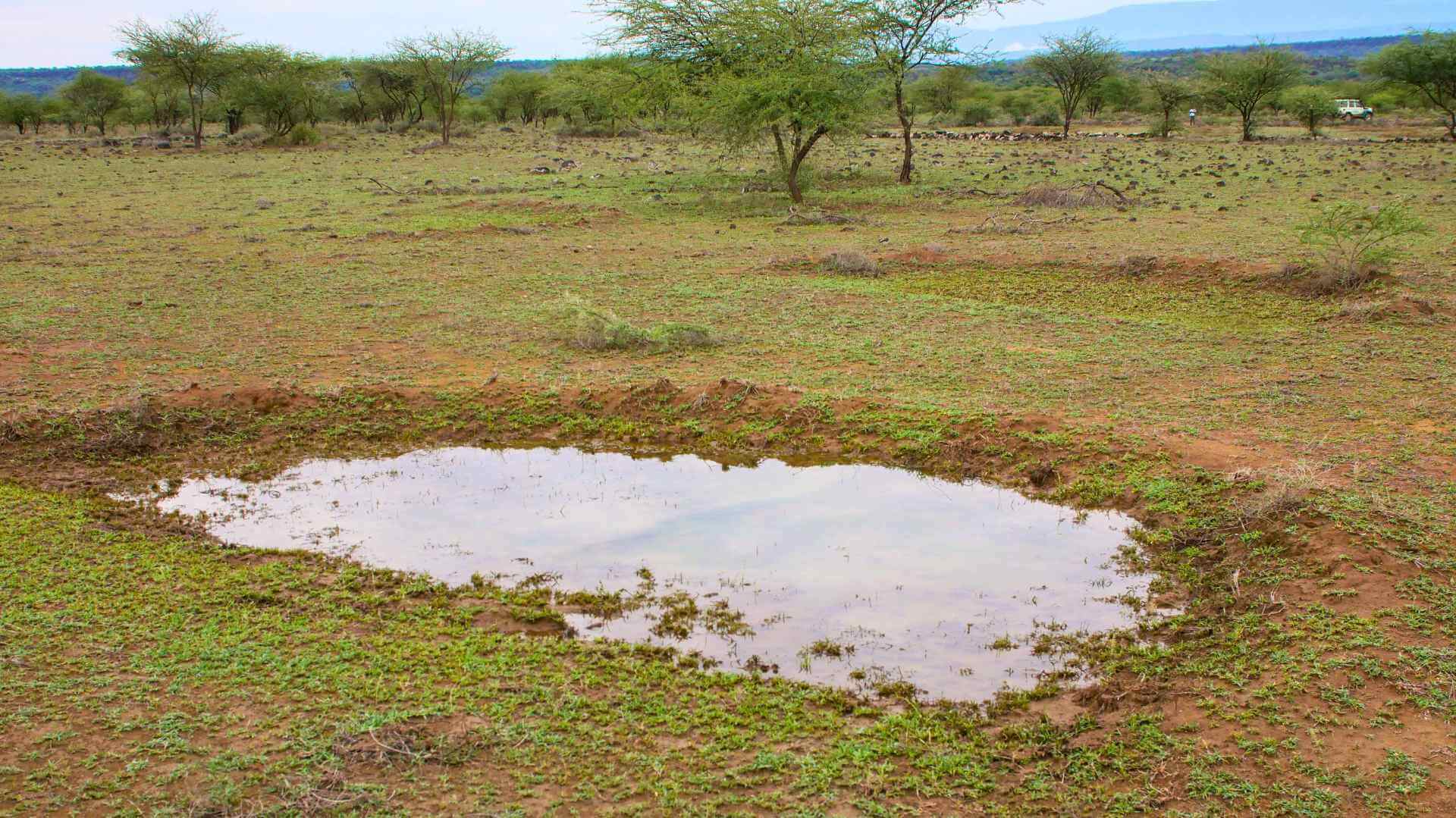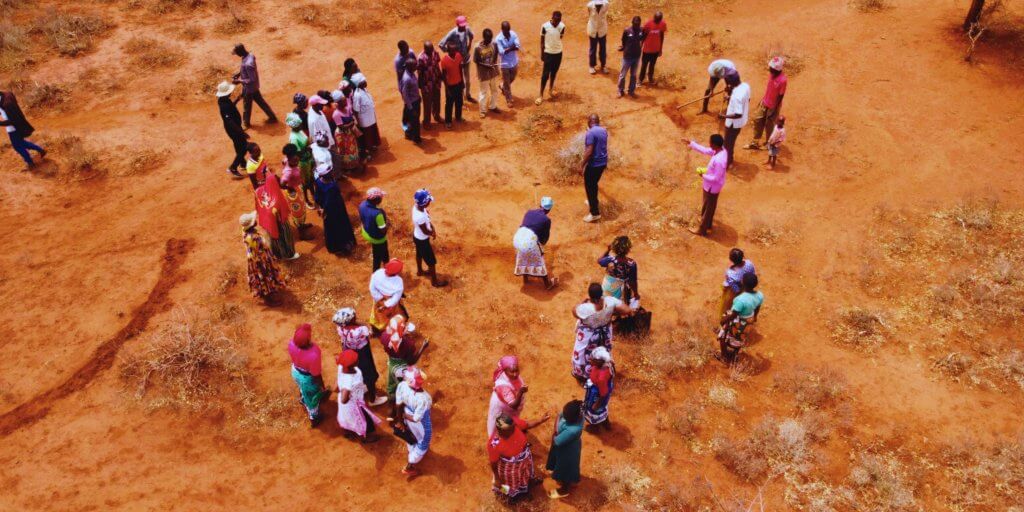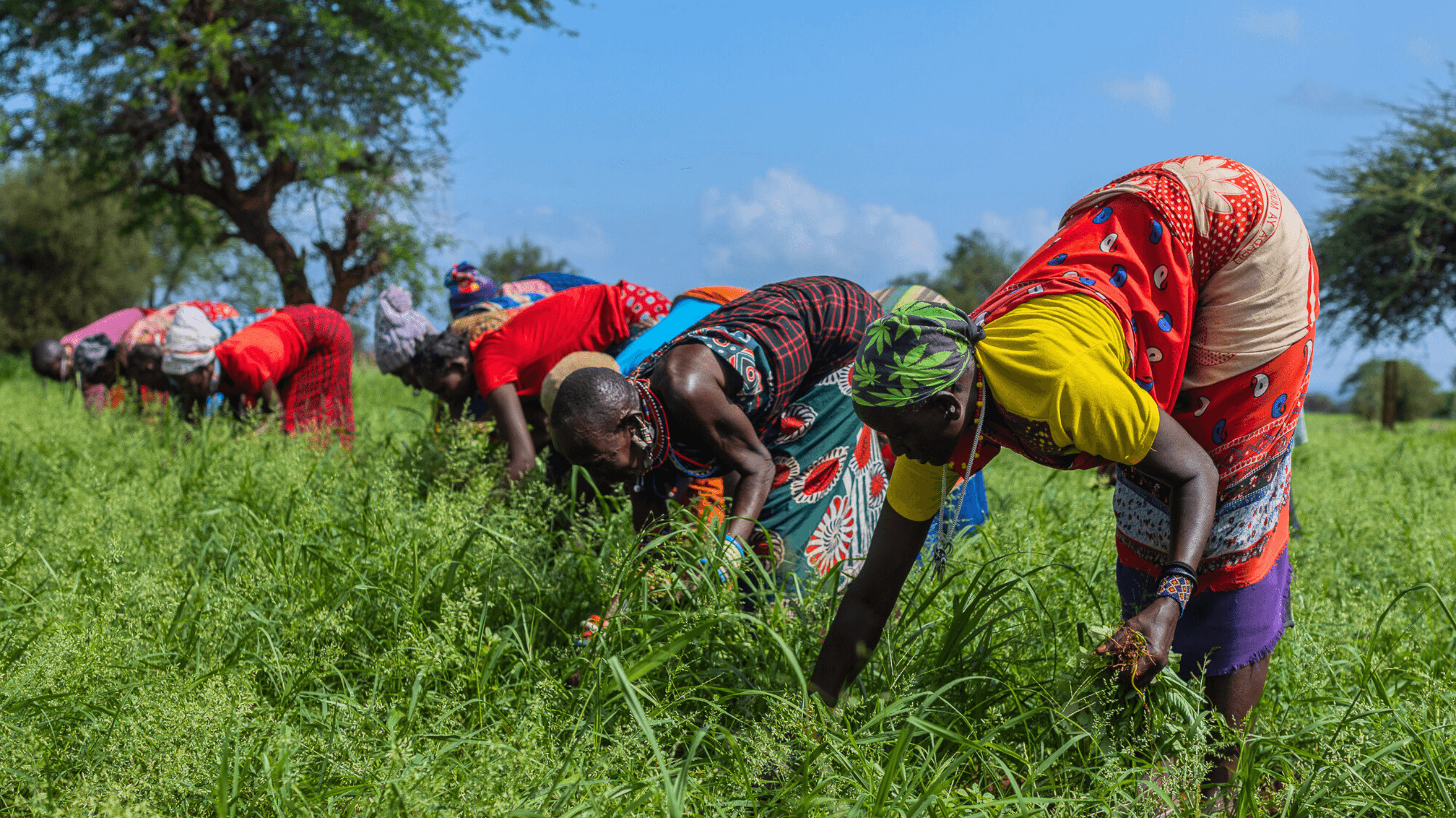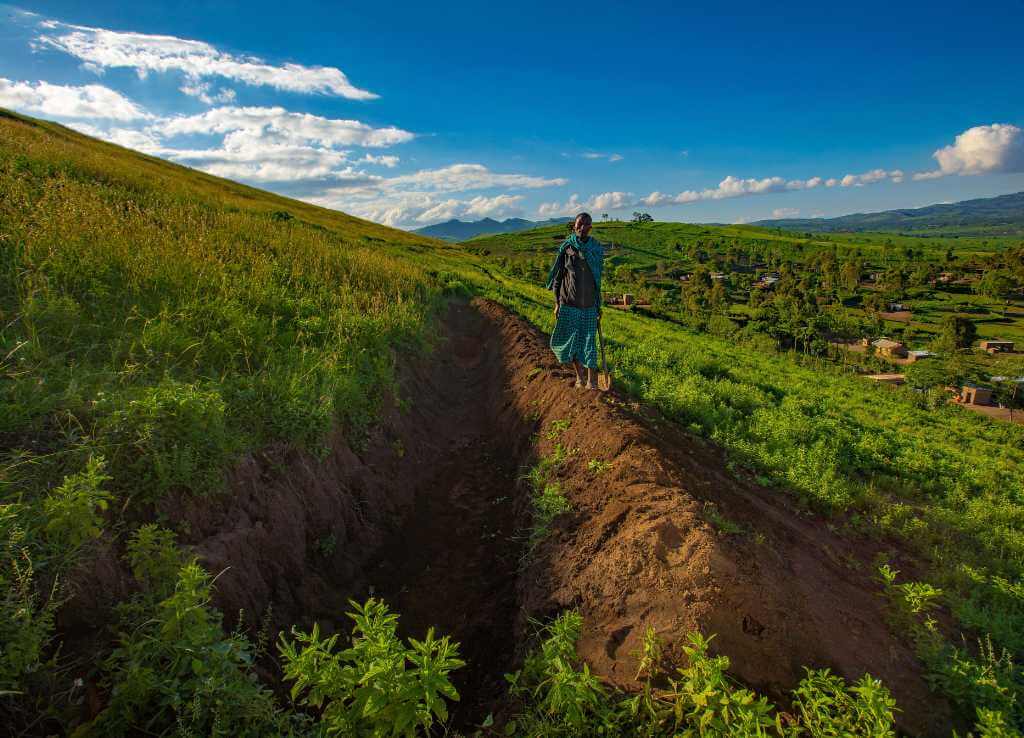Regreening project
Dodoma, Tanzania
Dodoma, Tanzania
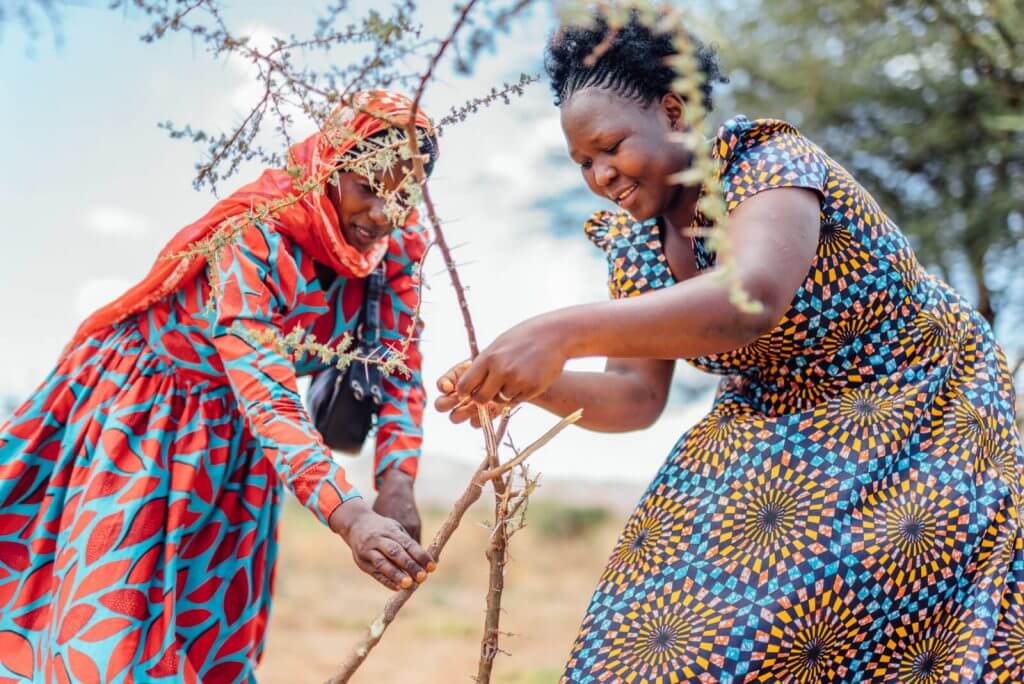
Ecosystem restoration in Kenya’s Mid Tana landscapes
Together with our implementing partners, we bring back sustainable vegetation to the areas by utilising and promoting effective land management best-practices. Two essential techniques are the establishment of semi-circular bunds and the creation of grass seed banks.
The Mid-Tana landscape of Kenya encompasses the counties of Makueni, Kitui, and Machakos which fall in the arid and semi-arid lands of the Lower Eastern region of Kenya. This area consists of agropastoral land owned by individual farmers and connecting important ecosystems and reserves, which are crucial in regional conservation efforts.
Effective sustainable land management remains a major challenge within this landscape, requiring tailored approaches rather than a one-size-fits-all solution. To address this, we have partnered with key stakeholders, including the Anglican Development Services Eastern, local administration, county governments and local communities to stabilise and rehabilitate these degraded lands through effective management practices. The impact of these efforts collectively contributes to the resilience of communities against climate change and environmental degradation. Additionally, this has led to farmers adopting the regreening interventions on individual farms.
hectares of land under restoration
water bunds dug
grass seed banks
women involved in the grass seed banks
litres of water retained in 2024
Together with farmers and pastoralists, we are restoring thousands of hectares of dry, degraded land in the counties of Makueni, Kitui and Machakos, within the lower eastern regions of Kenya. Bringing back vegetation has lots of positive effects on the climate, on the environment and biodiversity, on people and their livelihoods.
Bunds (or as we like to call them: “earth smiles”) are semi-circular shaped pits that capture rainwater. They are dug in the project site in order to capture rainwater that will otherwise get washed away over the dry, barren soil. By digging bunds, we can regreen a large area in a very short amount of time, benefiting biodiversity, nature, people and – eventually our climate.
Within our grass seed banks, women’s groups grow, harvest, and sell grass (hay) and seeds. They make an income by selling them on local markets or to organisations. The grass seed banks form an oasis of green in the barren surroundings, and the hay the women harvest is food for their livestock in dry seasons.
Selling the grasses and the grass seeds harvested from the grass seed banks generates a source of income for the women who are managing the grass seed banks. This income serves as an additional livelihood, making the women more independent.
In total 130 women are involved in these grass seed banks.
Selling the grasses and the grass seeds harvested from the grass seed banks generates a source of income for the women who are managing the grass seed banks. This income serves as an alternative livelihood, making the women more independent.
One of the main advantages bringing back vegetation is that it creates more moisture into the air. Vegetation “transpires”: it releases moisture into the air which cools it down. On a large enough scale, this helps to create clouds and increases the chance of rain, especially at the beginning and end of the rainy season, helping to restore the water cycle.
Water bunds are semi-circular holes dug to open up the hard top layer of the soil.
The bunds slow down and capture rainwater running downhills, preventing erosion of fertile soil. The water balance in the soil restores, increasing the water availability for the seeds still present in the soil. These seeds now get the chance to sprout, which means: regreening!
Grass seed banks are small parts of communal land that are used for the production of grasses and grass seeds.
The grass seed banks are managed and maintained by Maasai women groups. Once the grasses are fully grown, the grasses produce grass seeds which are sold by the women on local markets or to other regreening projects. This means more income for the women and more green in other areas, a win-win situation!
Fanya Juu and Fanya Chini are rainwater harvesting techniques. Farmers dig contours within their farmland to prevent erosion and to capture the valuable rainwater within their land.
Fanya Chini means ‘ throw it downwards’ in Swahili. It prevents the rain falling outside the farm from entering the farm, inhibiting erosion of fertile soil. Fanya Juu means ‘throw it upwards’, and prevents the rain falling within the farm to run off, increasing the water availability for the crops on the land. In the end, it helps the farmers to regreen their farms even more!
To ensure the sustainability of the projects, we will develop a pasture grazing management plan together with our local partner and the communities.
The goal is to prevent overgrazing in critical and vulnerable grazing areas.
To maximise our impact on landscape restoration, we promote the implementation of different types of sustainable land use practices among the communities, including grazing management, managing invasive species and erosion control measures.
We do this by giving training, organising community meetings and using different communication tools focused on knowledge sharing and inspiration. By activating community members to trial and use sustainable land use practices, we are able to keep the landscapes in the area green and healthy.
To truly understand how nature-based solutions transform entire landscapes, ecosystems and communities, you have to see it with your own eyes.
And that’s where we run into a problem: we can’t transport the entire world to our project areas. With this interactive experience, we found a solution. We decided to bring our regreening projects directly to you. Virtually, wherever you are. Come on in and experience the water bunds area, grass seed banks and Treecovery farm!
Our mission is to regreen African landscapes in the next 10 years, together with millions of farmers, and together with you.
If we want to cool down the planet in one decade, everyone needs to be in on the change. Through the power of media, communication, data, and the latest technology we can spread our message and scale up. We want to inspire, unite and empower an entire generation, growing a landscape restoration movement.
